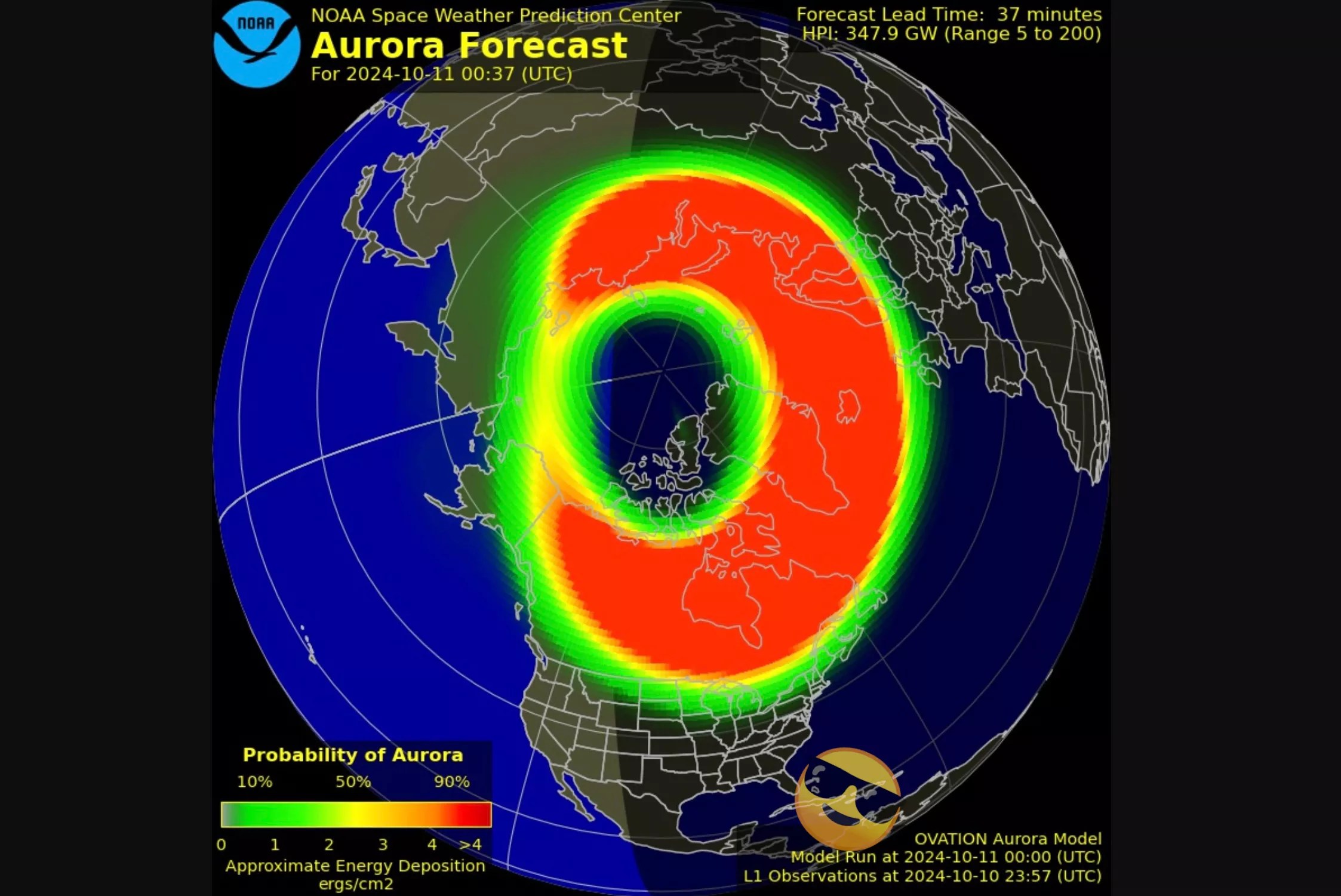
NOAA Space Weather Prediction Center graphic/noto emoji via Creazilla

Audio By Carbonatix
To tip our metaphorical cap to the great Yogi Berra, it’s déjÁ vu all over again.
Just as it did back in May, the National Oceanic and Atmospheric Administration issued a severe geomagnetic storm warning for a large swath of the United States.
The May forecast constituted the first “Severe” solar flare warning the NOAA had issued since 2005.
For those keeping score at home [🙋â€â™‚ï¸], this week’s reprise is the second such warning since 2005.
Will you step up to support New Times this year?
We’re aiming to raise $30,000 by December 31, so we can continue covering what matters most to you. If Miami New Times matters to you, please take action and contribute today, so when news happens, our reporters can be there.
In the jargon of the NOAA’s Boulder, Colorado-based Space Weather Prediction Center (SWPC), the agency has recorded intense geomagnetic activity on the sun since midweek: solar flares, a handful of which blew our way. Potential impacts from these events range from irregularities in the electrical grid and low-Earth-orbit satellites to GPS glitches.
And, oh, yeah: The northern lights (AKA the aurora borealis), which, per the SWPC, might be visible “as far south as Alabama.”
As it was in May, so it is again: The NOAA’s forecast appears unaware that Florida – you know, the prominent (some might say phallic [ðŸ†]) appendage that dangles from the eastern seaboard of the continental United States – exists.
Because in May, we dutifully reported that “sometimes you’re the windshield, sometimes you’re the bug,” as it were. And in May, South Florida social media blew up with gorgeous photos of the Northern Lights as seen from, y’know, their own backyards.
Makes you wonder if they’ve been, uh, staring at the sun too long.
And as it was in May, so it is again: Contrary to the agency’s identical forecast – that “the aurora may become visible over much of the northern half of the country, and maybe as far south as Alabama to northern California” – earlier this week, plenty of Floridians reported seeing the Northern Lights last night.
And our fellow Sunshine State residents once again provided the receipts to prove it on social media.
As for tonight, the latest bulletin from the SWPC, issued at 1650 UTC (that’s 12:50 p.m. East Coast Earthling time), says the “Aurora may be seen as low as New York to Wisconsin to Washington state” tonight.
In response to a request from New Times, the SWPC’s Shawn Dahl offered insights into the phenomenon of long-distance borealis love.
“People are seeing and capturing aurora images from much further south than the aurora might normally be visible because of changing understanding and also thanks to digital camera technology,” explains Dahl, who works as a space weather forecaster at the SWPC.
“Most people are noting a very nice red aurora in particular from areas well south of where the auroral perimeter might normally be expected because the red color is almost twice as high in the atmosphere as the normal green colors – this has to do with the particle interactions at those different altitudes.”
So there’s that, and also the intensity of this storm, which, as noted above, strayed into “Severe” territory, which the pros at the SWPC call G4.
“With storms like this, the changing interactions can make for periods of enhanced auroral response and periods of subsidence. Regarding this weekend, we have no new storms inbound that we are aware of, so it is highly unlikely that Florida could bear witness to the aurora again tonight.”
Still, as far as we’re concerned, things are looking up!